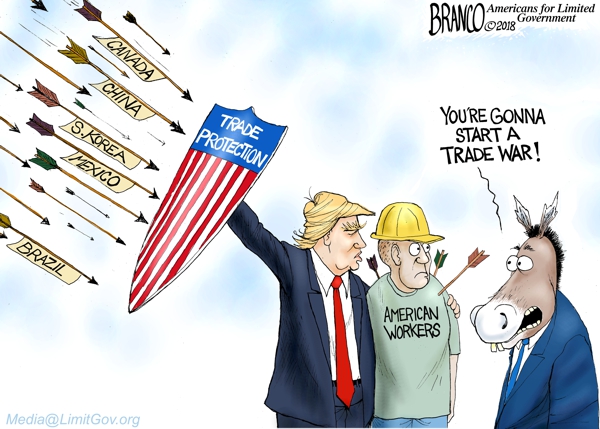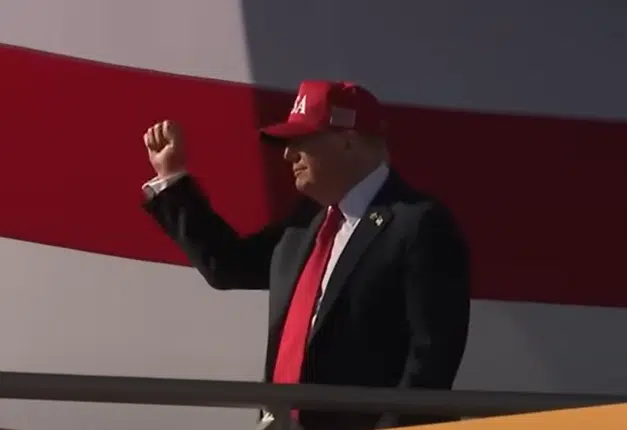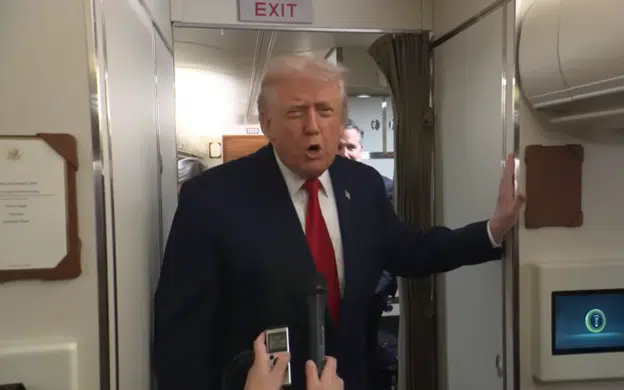
The House and the Senate will convene in a joint session of Congress on Jan. 6 to hear any and all objections to the Dec. 14 outcome of the Electoral College in favor of Joe Biden, with challenges expected in Arizona, Georgia, Michigan, Nevada, Pennsylvania and Wisconsin.
This is President Donald Trump’s last chance to reclaim the White House, but win or lose on Wednesday, the President has already served America with one of the most consequential single terms in our country’s history.
One area President Trump dramatically shifted U.S. policy was on trade. In 2016, Trump won the Republican nomination and narrowly defeated Hillary Clinton on promising to end the North American Free Trade Agreement (NAFTA), slapping massive tariffs on China and pulling out of the Trans-Pacific Partnership.
Trump kept all of his promises, leaving the Trans-Pacific Partnership in 2017, ending NAFTA with the newly agreed U.S.-Mexico-Canada Agreement (USMCA) in 2018, 2019 and 2020, and even managed to get China to agree to a phase one trade deal with the 25 percent tariff on $250 billion of goods and another 7.5 percent on the remaining $300 billion of goods.
President Trump leveraged the tariffs and even threatened sanctions, and as a result, the U.S. trade in goods deficit with China is $35.6 billion lower in the first ten months of 2020 than it was in the first ten months of 2016, according to U.S. Census Bureau data, a 10.2 percent reduction and the lowest it has been since 2011.
In the process, unemployment hit a 50-year low as recently as Feb. 2020 before the Covid pandemic struck.
As a result of this success and thanks to President Trump’s leadership — not to mention the fact that the Blue Wall states of Michigan, Pennsylvania and Wisconsin fell in 2016 to Trump in the first place — a Biden administration would be hard pressed to rescind these policies without exacting a heavy political price, especially without major concessions from Beijing.
Here, President Trump taught America how to stand tough against Beijing, reorienting U.S. national security and economic policy to an America first strategy, benefiting U.S. households and wage earners the most — and this policy could be permanent.
On Dec. 2, Biden told Thomas Friedman in an interview, “I’m not going to make any immediate moves, and the same applies to the tariffs. I’m not going to prejudice my options.”
Biden added, “I’m not going to enter any new trade agreement with anybody until we have made major investments here at home and in our workers,” an apparent vague reference to restoring the Trans-Pacific Partnership, and a promise that will surely come to haunt Biden should he break it.
On Dec. 16, the United Steelworkers Union fired a warning shot in front of the Subcommittee on Economic Policy of the Senate Committee on Banking, Housing and Urban Development, with Legislative Director Roy Houseman, declaring, “The union sees a growing creep by academics and policy experts to encourage the incoming administration to join the Trans-Pacific Partnership (TPP). Often ‘experts’ try to highlight the agreement as containing China but our union has taken a close look at this effort to contain China and the TPP was an abject failure.”
Houseman added, “the rules of origin that the TPP contained were a barn door sized access for China’s manufactured goods. The Ways and Means committee minority report on the TPP in 2014 highlighted that depending on the rules, 35 percent of a vehicle would had to originate in the TPP zone, meaning up to 65 percent of a vehicle’s components could come from outside the party countries like China.”
Biden has several reasons to worry.
Biden voted for the North American Free Trade Agreement (NAFTA) in 1993 and permanent normal trade with China in 2000. And, as Vice President, under former President Barack Obama helped to negotiate the Trans-Pacific Partnership.
In addition to his son Hunter Biden’s investment problems in China, Biden was instrumental in orchestrating sweetheart deal with Chinese President Xi Zinping (then Vice President of China) after meetings in 2011 and 2012 to bring Chinese companies to U.S. investors.
This culminated in a 2013 Memorandum of Understanding by the Public Company Accounting Oversight Board (PCAOB overseen by the Securities and Exchange Commission, allowing 156 Chinese companies to be listed on U.S. exchanges with a market capitalization of $1.2 trillion, according to the U.S.-China Economic and Security Review Commission.
This 2013 deal further capitalized production in China using child and forced slave labor. According to the annual report on forced child and slave labor by the Department of Labor Bureau of International Labor Affairs, any investment in Chinese companies producing textiles are made by child labor, artificial flowers, Christmas decorations, coal, footwear and garments and nails are made by forced labor, and bricks, cotton, electronics, fireworks and toys are made by child and forced labor. The Biden-Xi 2013 deal effectively made Americans slave holders, something Republicans would quickly remind him of.
Under Trump, Congress just unanimously passed legislation to begin delisting non-transparent Chinese companies from U.S. stock exchanges. That’s another policy that will be difficult for Biden to undo — no matter how much Wall Street squawks.
Then there are the ever-present crises of the Chinese crackdown on Hong Kong and the threat posed to Taiwan. Any moves by Biden to, say, rescind the tariffs that were reciprocated by China expanding its territories would be viewed as U.S. weakness — and be a political catastrophe for a Biden administration.
When it comes to China, especially if Trump is waiting in the wings for another potential run, Biden will have almost zero margin for error.
Robert Romano is the Vice President of Public Policy at Americans for Limited Government.






